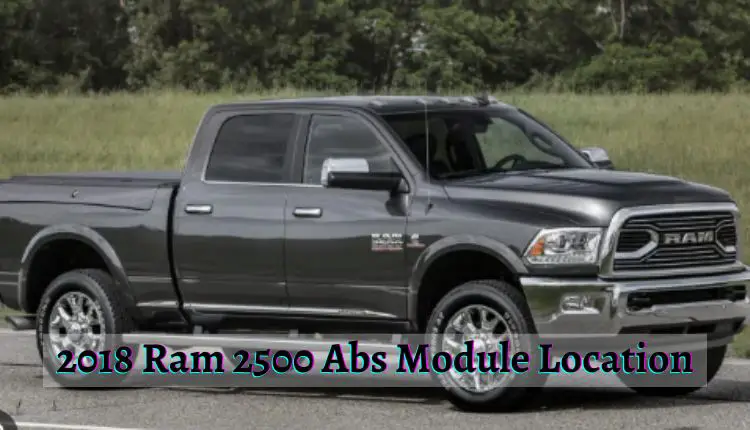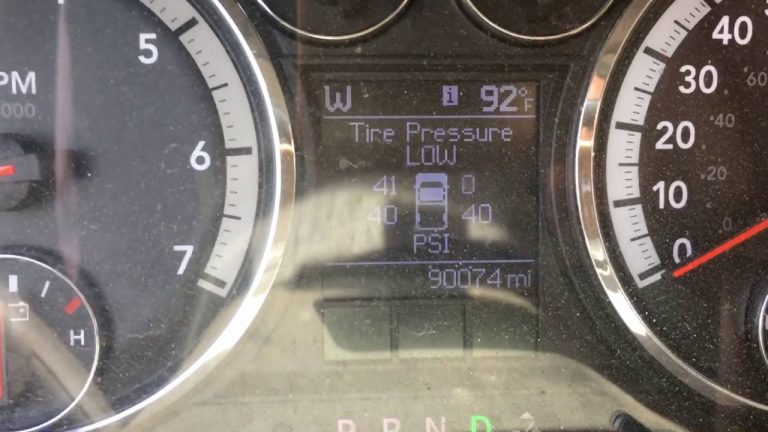2016 Ram 2500 Heater Core Replacement: Fix it Like a Pro!
Is your 2016 Ram 2500 giving you the cold shoulder? If you’re shivering in the driver’s seat, it may be time to replace your heater core. In this guide, we’ll cover:
- Symptoms of a bad heater core
- Tools and parts you’ll need
- Safety precautions to take
- Step-by-step replacement instructions
- Troubleshooting tips
- Replacement cost
Don’t let a faulty heater core leave you in the cold. Read on to find out how to fix it and get back to cozy drives.
Recognizing Symptoms of a Bad 2016 Ram 2500 Heater Core
Having a malfunctioning heater core can make your drive uncomfortable, or worse, put your vehicle at risk. Here’s a rundown of the telltale signs that your heater core might be on the fritz.
No Heat from Heater Vents
Why It Happens
If you crank up the heat but still feel cold air blowing, the heater core is likely not working.
What to Look For
- The air remains cold even when the heater is on.
- Inconsistent warmth from different vents.
Sweet Smell Inside the Cabin
Why It Happens
A distinct sweet smell inside the vehicle may indicate a coolant leak from the heater core.
What to Look For
- A noticeable sweet smell when the heater is on.
- The smell intensifies with higher fan speed.
Foggy or Steamy Windows
Why It Happens
Coolant leakage can evaporate and fog up your windows, obstructing your view.
What to Look For
- Windows fog up inexplicably.
- Reduced visibility, especially during cold weather.
Coolant Leak Under the Dashboard
Why It Happens
A leaking heater core often leads to a puddle or wet spot under the dashboard.
What to Look For
- Visible liquid or staining on the car floor.
- Wetness around the passenger-side footwell.
Overheating Engine
Why It Happens
A leaking heater core can result in low coolant levels, causing your engine to overheat.
What to Look For
- Temperature gauge reading higher than normal.
- Warning lights on the dashboard.
Knowing these symptoms is your first line of defense against heater core issues. Armed with this knowledge, you’ll be better prepared to tackle the repair, whether you choose to do it yourself or take it to a professional.
Required Tools and Parts For Replacement
Having the correct tools and parts is crucial for a successful heater core replacement. The right equipment not only makes the job easier but also ensures that your vehicle runs smoothly after the repair.
Essential Tools
Here’s a list of must-have tools you’ll need for the job.
Table: List of Essential Tools
| Tool | Purpose |
|---|---|
| Socket wrench set | Loosening and tightening nuts |
| Screwdriver set | Removing screws |
| Pliers | Gripping and pulling |
| Drain pan | Catching draining coolant |
| Funnel | Refilling coolant |
| Coolant bleed tool | Removing air from the coolant |
| Torque wrench | Accurate bolt tightening |
| Safety glasses | Eye protection |
Points to Note:
- A torque wrench ensures you tighten bolts to manufacturer specifications.
- Safety glasses are non-negotiable for protecting your eyes.
Essential Parts
Without the right parts, your repair effort won’t get far. Here’s what you’ll need.
Table: List of Essential Parts
| Part | Purpose |
|---|---|
| The main component of the heating system | The main component for the heating system |
| Gasket for heater core | Sealing and preventing leaks |
| Coolant | Cooling agent |
| Distilled water | For diluting coolant |
Additional Tools and Parts That May Be Useful
Sometimes, having a few extra tools can make the job more manageable.
- Dashboard removal tool: Eases the dashboard removal process
- Heater box removal tool: Helpful for taking out the heater box
- Hose clamps: Keeps hoses in place
- Electrical tape: Temporary fixes for exposed wires
- Wire ties: Organizing loose wires
Where to Buy or Rent Tools and Parts
Finding the right tools and parts is easier than you think.
- Auto Parts Stores: One-stop shop for both tools and parts.
- Online Retailers: Convenient but ensure you’re buying from a reputable source.
- Rental Shops: A budget-friendly option for expensive, one-time-use tools.
Remember: Always opt for quality over price to ensure long-lasting repair.
Safety Precautions
Why Safety is a Priority
When dealing with auto repairs, safety isn’t optional; it’s a necessity. Following the correct safety measures ensures that both you and your 2016 Ram 2500 come out of the repair process unscathed.
Importance of Safety
Safety precautions are not just a good idea; they’re essential. Skipping safety steps can lead to severe consequences, such as injury or further damage to your vehicle.
Working in a Well-Ventilated Area
Why It Matters
Coolant fumes can be toxic. A well-ventilated space ensures that these fumes don’t accumulate, reducing the risk of inhalation.
How to Achieve It
- Open garage doors and windows
- Use fans to circulate air
- If possible, work outdoors
Wearing Safety Glasses and Gloves
Why It’s Crucial
Your eyes and skin are vulnerable during auto repair tasks. Coolant can irritate both.
What to Use
- Safety Glasses: Full-coverage types are best.
- Gloves: Opt for chemical-resistant gloves.
Allowing Engine to Cool Down
Why It’s Necessary
A hot engine can cause the coolant to be scalding, risking severe burns.
How Long to Wait
- Turn off the engine.
- Wait at least 30 minutes for the engine to cool down.
Draining Coolant Safely
Why Proper Drainage is Vital
Spilled coolant is not only a slipping hazard but also toxic to pets.
Steps for Safe Drainage
- Place a drain pan under the radiator.
- Open the radiator’s drain plug.
- Allow coolant to fully drain into the pan.
- Important: Seal and dispose of used coolant properly.
Tips for Avoiding Electrical and Hose Damage
Electrical Precautions
- Disconnect the battery before starting.
- Label connectors and take photos for easier reassembly.
Hose Precautions
- Use pliers for hose removal; don’t yank.
- Check for wear and tear and replace as needed.
Remember: A small mistake can lead to bigger problems, so always err on the side of caution.
With safety precautions in place, you’re now ready to proceed with the actual repair process, ensuring a smoother and risk-free experience.
Step-by-Step 2016 Ram 2500 Heater Core Replacement Instructions
Ready to get your hands dirty? Replacing a heater core is a complex but doable task if you follow the steps meticulously. Let’s dive in.
Before you start, make sure you’ve gathered all the necessary tools and parts. Having everything at arm’s reach streamlines the process.
Draining the Coolant
Why Drain First
Coolant circulates through the heater core. Draining it prevents spills and potential burns.
How to Drain
- Place the Drain Pan: Under the radiator to catch the coolant.
- Open the Drain Plug: Usually located at the bottom of the radiator.
- Wait: Allow all coolant to drain into the pan.
Removing the Dashboard
Why Remove the Dashboard
The heater core is typically located behind the dashboard. Removing it grants easy access.
Steps to Remove
- Disconnect Battery: Safety first.
- Remove Screws: Usually located on the sides and bottom.
- Carefully Lift: Take your time to avoid damaging any parts.
Removing the Heater Box
Purpose of Heater Box Removal
The heater core sits inside the heater box. You’ll need to remove this to get to the core itself.
Removal Guide
- Locate the Heater Box: Often on the passenger side.
- Unscrew Fasteners: Keep them as you’ll need them later.
- Gently Remove: Slide it out carefully.
Removing the Old Heater Core
Why It Needs to Go
A faulty heater core is the reason you’re here. Time to take it out.
Removal Steps
- Identify Old Heater Core: It should resemble a mini radiator.
- Disconnect Hoses: Usually two hoses are attached to it.
- Lift Out the Core: This should come out easily once the hoses are disconnected.
Installing the New Heater Core
The Heart of the Process
Installing a new heater core correctly ensures you won’t have to redo the job.
Installation Steps
- Place the New Core: Into the slot where the old one was.
- Connect Hoses: Secure tightly to prevent leaks.
- Double-Check: Make sure it’s properly seated.
Reinstalling the Heater Box
Why It’s Crucial
The heater box houses the heater core. It needs to be securely reinstalled.
Steps to Reinstall
- Slide In Heater Box: Into its original position.
- Screw-in Fasteners: Use the ones you kept earlier.
Reinstalling the Dashboard
Finishing Up
You’re almost there. Time to put the dashboard back in place.
Reinstallation Guide
- Align Dashboard: Make sure it fits as before.
- Screw-in Fasteners: Tighten, but not too tight.
- Reconnect Battery: You’re nearly done.
Refilling the Coolant
Last Step Before Testing
You drained it earlier; now it’s time to put it back.
Refill Steps
- Use a Funnel: To avoid spills.
- Pour Coolant: Up to the fill line.
- Add Distilled Water: If your coolant is not pre-mixed.
Testing the New Heater Core
Moment of Truth
Before declaring victory, you need to test the system to ensure everything is working as it should.
How to Test
- Turn on the Engine: Let it reach operating temperature.
- Turn on the Heater: Check for hot air and any unusual smells.
- Inspect for Leaks: Make sure all connections are leak-free.
Remember: A successful test means you’ve navigated through a complex task effectively. If you encounter issues, consult your vehicle’s repair manual or seek professional assistance.
With your new heater core installed and tested, you can now enjoy a cozy, warm drive even on the chilliest days.
Troubleshooting Tips
Your Safety Net for Common Hiccups
Even the best-laid plans can encounter hitches. That’s why knowing some troubleshooting tips can save you time and possibly another round of repairs.
Every repair task can come with its own set of challenges. Being prepared for these potential roadblocks can make the process smoother.
Difficulty in Removing Dashboard or Heater Box
When Things Won’t Budge
Stuck screws or a jammed heater box can slow down your repair process.
How to Tackle
- Check for Hidden Screws: Sometimes screws can be hidden under panels or behind vents.
- Use Penetrating Oil: A little can go a long way in loosening stuck parts.
- Consult the Repair Manual: For any model-specific instructions.
Issues with Installing the New Heater Core
When the New Part Resists
Occasionally, the new heater core might not fit as easily as expected.
What to Do
- Inspect for Obstructions: Something might be blocking the slot.
- Check Alignment: Ensure the new heater core aligns perfectly with the connections.
- Use Appropriate Force: A gentle yet firm push can often do the trick.
Heater Not Working After Replacement
After All That Effort
It’s disheartening when the heater still doesn’t work after a full replacement.
Troubleshooting Steps
- Check Coolant Levels: Insufficient coolant can affect heating.
- Inspect Electrical Connections: A loose wire could be the culprit.
- Look for Leaks: Leaking coolant will also affect the heater’s performance.
Additional Troubleshooting Advice
When in Doubt
Sometimes you may encounter unique issues not commonly seen.
General Tips
- Check the Fuse: A blown fuse might be affecting the heater.
- Listen for Noises: Unusual sounds can provide clues.
- Consult a Professional: When all else fails, don’t hesitate to seek expert advice.
Remember: Troubleshooting is an art. With patience and the right know-how, you’ll be on the road to becoming a DIY repair master.
Final Checklist
The Home Stretch for a Flawless Repair
You’re almost at the finish line. But before you declare the job complete, running through this final checklist ensures your hard work pays off without any last-minute hitches.
Ensuring All Screws and Bolts are Tightened
Why It’s Crucial
Loose screws or bolts can lead to rattling, leaks, or even component failure over time.
How to Ensure
- Use a torque wrench for precise tightening.
- Recheck each fastener to confirm it’s secure.
Checking for Any Leaks
Avoid Future Troubles
Leaks can lead to overheating and other serious issues.
Leak Check Steps
- Run the Engine: Let it reach operating temperature.
- Inspect: Look carefully around the hoses, the heater core, and connectors.
- Feel: Use gloves to feel around connections for moisture.
Ensuring All Electrical Connections are Secure
For a Fully Operational System
Loose wires can lead to malfunctioning controls or even electrical fires.
Ensuring Steps
- Double-Check: Go back and make sure all plugs click securely into place.
- Visual Confirmation: No exposed wires should be visible.
Final Testing of the Heater and Other Dashboard Controls
The Moment of Truth
If everything’s installed correctly, all your dashboard controls should function as expected.
How to Test
- Start the Engine: Let it idle for a few minutes.
- Run the Heater: Check for proper heating and any odd smells.
- Test Controls: Try all dashboard controls to confirm they’re working.
Remember: A successful test means your repair job is complete, and you can now enjoy a warm and comfortable ride. If you encounter any issues, don’t hesitate to consult your vehicle’s repair manual or a professional mechanic. You’ve done a great job making it this far, and you’re now equipped with the knowledge to tackle future repair tasks head-on.
Dodge Ram Heater Core Replacement Cost Chart
| Dodge Ram Model | Year | Estimated Cost Range |
|---|---|---|
| Ram 1500 | 2000 | $600 – $1,200 |
| Ram 1500 | 2010 | $700 – $1,400 |
| Ram 1500 | 2014 | $800 – $1,500 |
| Ram 1500 | 2016 | $800 – $1,500 |
| Ram 2500 | 2000 | $600 – $1,200 |
| Ram 2500 | 2010 | $700 – $1,400 |
| Ram 2500 | 2014 | $600 – $1,200 |
| Ram 2500 | 2016 | $600 – $1,200 |
| Ram 3500 | 2000 | $600 – $1,200 |
| Ram 3500 | 2010 | $700 – $1,400 |
| Ram 3500 | 2014 | $700 – $1,400 |
| Ram 3500 | 2016 | $700 – $1,400 |
Conclusion:
You did it! You’ve navigated through the nitty-gritty of heater core replacement and come out the other side a DIY champ. Now you’re ready to face winter’s chill from the cozy comfort of your warm vehicle. So go ahead, take that victory lap around the block to enjoy the fruits of your labor. You’ve earned it!
Remember, these are general estimates, and actual costs may vary depending on your location, labor rates, and parts selection. To get a more accurate quote for your specific vehicle, it’s a good idea to contact a few repair shops in your area and compare prices and service quality.







